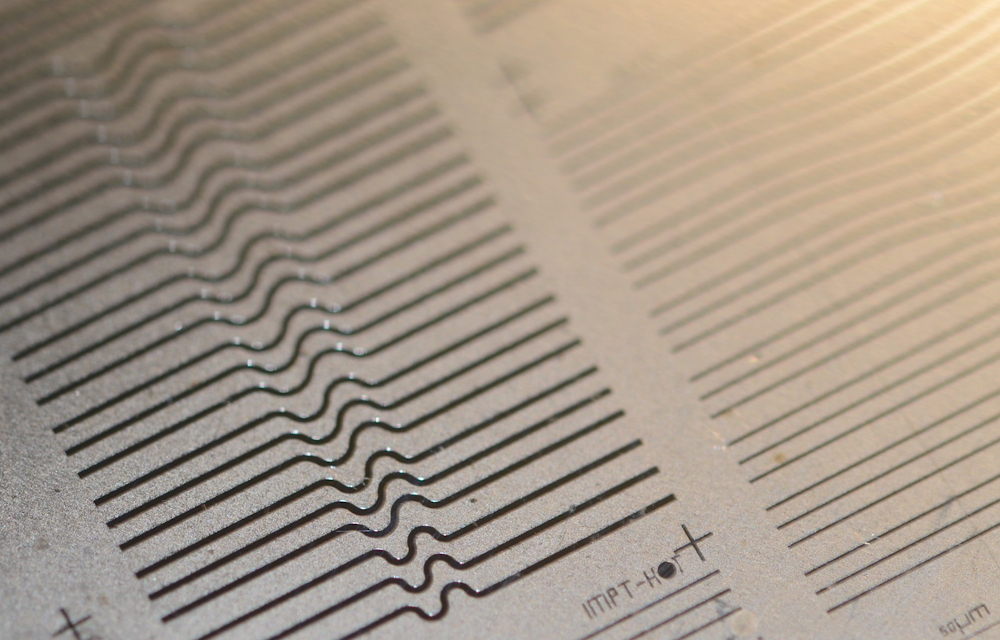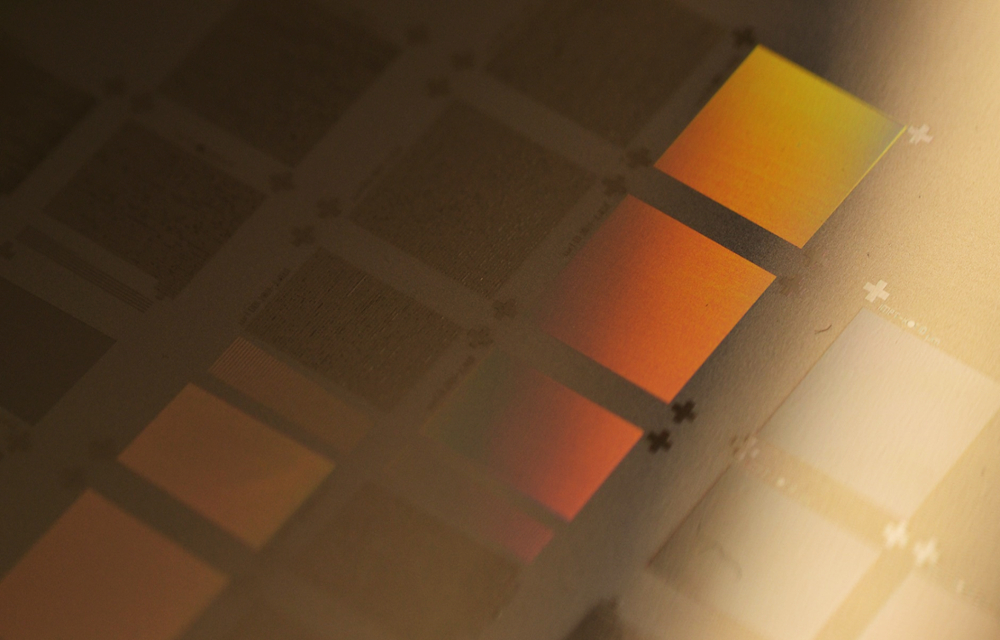In the Cluster of Excellence PhoenixD, the Institute of Micro Production Technology (IMPT) is working on the development of an optical platform for the manufacturing and integration of optical components. The platform consists of an injection-molded body. The mould inserts required for plastic injection moulding are manufactured at the IMPT using photolithography and electroplating.
Plastic as a substrate: It all depends on the material
The basic challenges in fabricating the optical platform are the selection of the substrate and its structuring. Here, the scientists are pursuing a novel strategy in the choice of materials: Instead of conventional substrates such as glass or silicon, they use a new type of plastic that was specially developed for the Laser Direct Structuring (LDS) process. This plastic is polyetheretherketone (PEEK), a high-temperature stable and chemically almost inert thermoplastic material
The LDS capability of this plastic allows the manufacturing of an electrical infrastructure such as conductor paths or vertical interconnect access (via) holes. This is crucial for the electrical contacting of active components such as laser diodes or photocells and their temperature management.
Efficient production outside the clean room environment
Optical systems require high surface qualities and require the highest demands on precision and shape accuracy. These demands can be met by mold production using lithography and electroplating. A major challenge, however, is the surface roughness, which can be influenced by the injection molding process as well as by mold manufacturing.
Thanks to injection molding technology, pre-structured substrates can be produced that are competitive with high-precision microsystems in terms of structure resolution. Even smallest structures in sub-micrometer range, such as diffraction gratings, can be produced in this way. The classical structuring is usually carried out on any substrate by means of photolithography and PVD processes and requires a clean room environment. High investment costs in this infrastructure usually prevent the technological leap into the small and medium-sized businesses.
The concept developed at the IMPT deliberately dispenses with photolithography of each individual substrate through pre-structuring, thus opening up the possibility of batch production of high-precision microsystems outside the clean room environment.
Contribution to PhoenixD
With the injection-molded optical platform, the IMPT scientists intend to create a highly integrative system that can be modularly combined with the concepts of the other research partners in the Cluster of Excellence PhoenixD and can be expanded as required. The use of different optical fiber materials, the connection of an optical component or self-assembling systems: all this is feasible with the concept of a uniform optical platform that can be produced quickly and cost-effectively.

